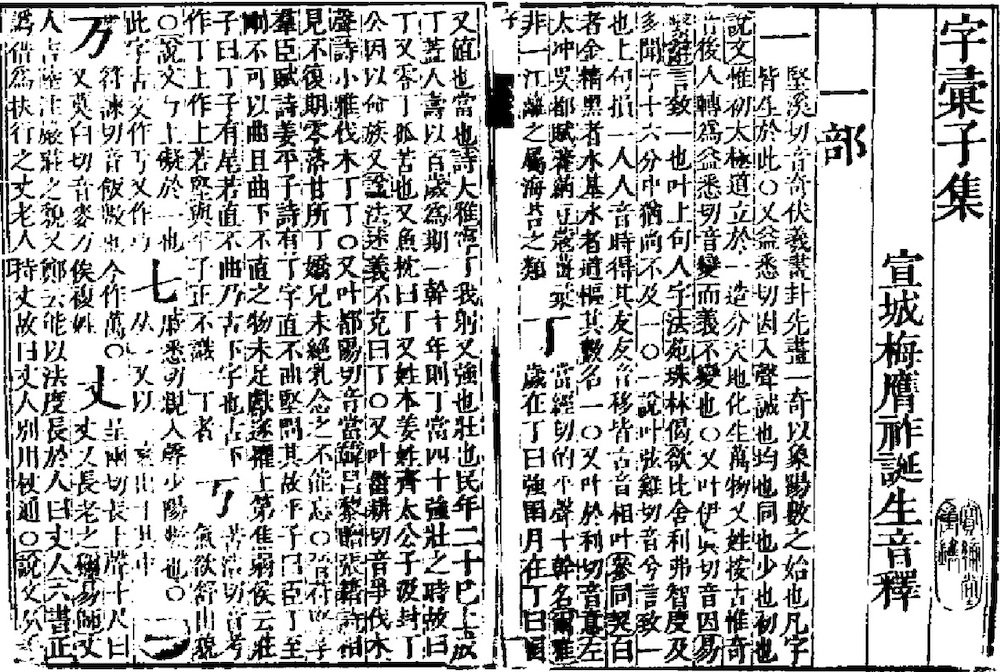Zihui 字彙 "Collection of characters" is a character dictionary whose entries are arranged according to character radicals. It was compiled during the late Ming period 明 (1368-1644) by Mei Yingzuo 梅膺祚, courtesy name Dansheng 誕生, and published in 1615.
The content of the dicationary is mainly based on the earlier Ming-period character dictionary Hongwu zhengyun 洪武正韻, whose entries are typically arranged according to rhyme groups. The Zihui does not record alternative writings and renders only one "orthodox" shape of each character. It also renounces the widespread use of ancient characters common in older dictionaries.
The real merit of the Zihui is that it condensed the 540 radicals (bushou 部首) that had been established in the Later Han-period 後漢 (25-220) dictionary Shuowen jiezi 說文解字 to 214 radicals. The second deepgoing restructuring of the traditional character system was that they were arranged according to stroke number, radicals written with one brush stroke at first (一丨丶丿乙亅), and the complex radical 龠 with 17 brush strokes last. The characters themselves are arranged according to the residual stroke number left after subtracting the radical, e.g. 卟古句 being the first characters of the radical 口, and 囔囕囖 the last.
 |
Beginning of the Zihui 字彙, facscimile of the 1615 print in the series Xuxiu Siku quanshu 續修四庫全書. Just like later the Kangxi zidian, the Zihui is divided into "collections" numerated according the twelve Terrestrial Branches, see the headline zi ji 子集. |
The book is divided into 12 collections (ji 集) numbered according to the terrestrial branches. The Zihui contains 33,179 characters. For each character the pronunciation is indicated first, then the meanings, with the most important meaning first. Apart from quotations from literature the Zihui also gives examples from colloquial language to highlight the use of words.
Because Mei Yingzuo put his attention on contemporary characters and their syle of being written he adds an introdoctory chapter explaining the rules of brush strokes. At the end he adds a chapter putting side by side easily confounded characters, like 刺 and 剌.
These fundamental changes served as a model for later dictionaries, as Zhang Zilie's 張自烈 (1597-1673) Zhengzitong 正字通 and the famous Kangxi zidian 康熙字典.